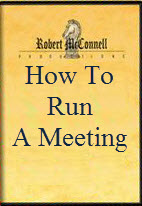MAKE A MOTION IN THE POSITIVE, NOT THE NEGATIVE

LITTLE BEN SAYS: MAKE THE MOTION IN THE POSTIVE
Positive thinking has been around for years. And it certainly is helpful. But putting a motion in the positive is a rule in parliamentary procedures. If you do not want to do something, then no motion needs to be made. Only by making a motion to do something, makes its possible.
Sometimes members will rise and say, “I move that we do not send money to the XYZ charity,” after they have heard a letter read about soliciting funds. This becomes really confusing because the members are voting yes to not do something, and if they vote no does it mean then that they are going to give money to the charity? If you do not want to give money when such a letter is read, then just remain silent. No action has to be taken just because a letter is read to the assembly. If a member thinks it is a good idea to give money, let him rise and make the motion to give money to that charity. That way if the members vote yes, then it is clear that the club will give the money. If members vote no, it is apparent that they don’t want to give money to the charity.
So remember, motions are always put in the positive and not in the negative.
